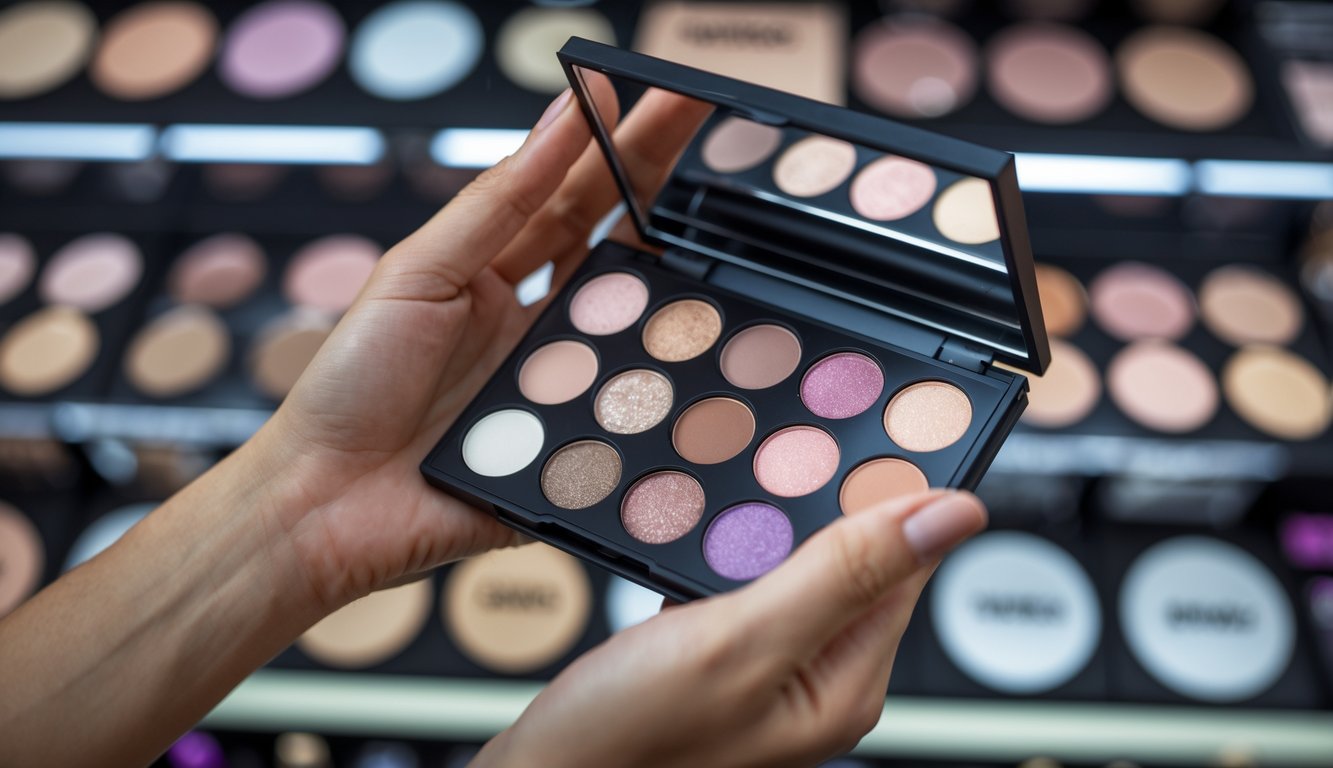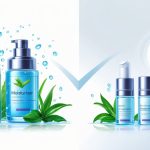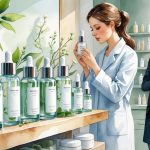Hidden Markups on Eyeshadow Palettes Discovered by Smart Shoppers
So, I’m digging through my makeup graveyard—seriously, half these palettes are just shades of “dusty rose” and “maybe-mauve,” and the price tags? Still kind of a joke. Apparently, there’s this whole thing with hidden markups on eyeshadow palettes that’s basically siphoning off my coffee money every time I tap ‘add to cart.’ And it’s not even about some magic ingredient or celebrity’s initials stamped on the box. I mean, how can two palettes with the exact same shades cost double just because one comes in a shiny compact or has a TikTok star’s signature? I read Refinery29’s take and, wow, it’s like brands just spin a wheel and slap on whatever price they feel like after launching another “must-have” set.
People keep asking me, “Isn’t eyeshadow just ground-up colored powder?”—which, yeah, it kind of is. The ingredient lists usually look like the back of a plain rice cake bag, but then suddenly you’re paying four times as much for “exclusive” packaging or some influencer’s face on the box. I’ve cornered product managers at trade shows and, trust me, they weren’t exactly eager to explain why a plastic tray costs $30. Reddit’s BeautyGuruChatter is just a sea of people sick of price hikes, but we all still end up buying the “freshest” set of taupes. Why? No idea.
And honestly, who’s admitting that those so-called “luxury” palettes and the B-list ones (like that 31-shade Laura Geller set—yep, this one) are practically twins under the hood? The packaging tries so hard to look expensive, but it feels like something from a clearance bin. All the sneaky upcharges and “exclusive” nonsense slide right by unless you’re one of those detail-obsessed shoppers who dig up side-by-side swatches and find $9 dupes for $60 palettes. Retailers definitely don’t want you finding those.
What Are Hidden Markups on Eyeshadow Palettes?

Here’s what’s been driving me nuts: prices for eyeshadow palettes are all over the place, even if the ingredients are basically identical. Walk into a store, and suddenly a regular shimmer shade costs double because it’s “limited edition” or comes in gold trim. Ever buy a “value set” and realize it’s not even a deal? Been there.
Definition and Types of Markups
Markups are sneaky. Sometimes it’s just a straight-up retail jump, other times it’s buried under “special edition” stickers. Brands toss on fancy packaging, throw in one weird color nobody wants, and bam—price goes up. I didn’t get it at first either. There’s the classic retail markup (wholesale to shelf), “curated” influencer bundles, or random collabs that literally do nothing for the actual makeup.
Some stores jack up prices by 400%. Not kidding. SweetyHigh even pointed out that “high-quality” pigments aren’t always better, just pricier. Holiday sets? Numbers go up because you might miss out. And my personal favorite: fake scarcity. A palette disappears, then comes back for twice the price. Is that legal? Who even knows anymore. It’s so common, I don’t even get mad.
Why Markups Exist in the Beauty Industry
Trying to figure out why these markups exist is a lost cause. Someone from marketing will say, “It’s about the experience”—please, I’m not paying $60 for a “journey,” I just want eyeshadow. Packaging is the worst. Lights, mirrors, gold foil, all for a product that should cost $10 but somehow ends up at $45.
One time, I listened to an industry buyer go on about collab fees, celebrity deals, shelf placement, and the “aspirational” value of a palette that’s been on Instagram. If it has a big logo, expect to pay double. Even when the ingredients are the same, prices can swing by 150% just for being “exclusive.” Those tiny changes they brag about? My dermatologist said mica and talc are basically the same cost-wise, so it’s all for show.
Impact on Pricing and Perceived Value
People really believe that a higher price means better eyeshadow. In reality, most palettes—drugstore or “luxury”—are almost identical except for maybe one or two shades. Watch out for “limited editions.” Usually it’s just a new cover, not a new formula.
I totally got sucked into a $70 “baked pigment” palette once. Spoiler: “baked” just means pressed a different way, like that Laura Geller palette. My friend bought a flashy set and it faded by lunch. We both agreed the only thing premium was the box. Retailers bank on the idea that paying more means getting more, but that’s rarely true.
Ingredients lists? Copy-pasted, half the time. I found two “prestige” palettes with the same formula, except one had a different smell. People still rave about how “luxurious” it feels. Is luxury just a fancy box? I keep asking myself that.
How Smart Shoppers Uncovered Hidden Markups
My group chats are just nonstop screenshots of dupes and people complaining about getting ripped off on some shimmery shade. Eyeshadow palettes for $60? For a few pans of brown and gray? It’s wild. But lately, people are actually figuring out how these markups work—and it’s not just YouTube conspiracy videos nobody watches.
Research and Comparison Strategies
For real, my friend Kara is a spreadsheet maniac. She started tracking ingredients, weight per pan, and price-per-gram from drugstore to “luxury” brands. Sometimes the price difference is $48 for palettes with, no joke, almost the same formula. Tocopherol acetate, mica, random preservative—most of the time, the INCI codes match.
She didn’t just Google this stuff; she found actual manufacturer invoices on forums. She even calculated the cost-per-use and it’s literally pennies, but the markup is bonkers. This article confirmed it. Check out this table—ridiculous.
| Palette Name | Retail Price | Est. Production Cost | Markup Ratio |
|---|---|---|---|
| Classic 12-pan Lux | $58 | $5 | 11.6x |
| Budget Brand Basics | $11 | $3 | 3.7x |
Nobody’s talking about this on morning TV, but here we are. Ever put a $75 palette next to a $13 dupe and realized the only difference is the box? I have. Performance? Basically the same.
Influence of Online Communities and Creators
Reddit loses its mind over the tiniest price jump. Seriously, if you want to waste a night, just scroll through the comments under any “sale” post. People are out here exposing retailer tricks and markups like it’s their job. Even non-makeup people in the InstacartShoppers thread figured out how the supply chain games us.
And TikTok? Wild. Beauty creators break down ingredient lists faster than most chemists. One viral review and suddenly a $12 dupe sells out everywhere. I’ve DM’d a few creators and they’ll straight-up admit: sponsorships mess with what gets posted, and most of the real info comes from leaks, bored lab techs, or someone’s cousin who works at a factory.
People team up, share receipts, batch codes, side-by-side swatches, and brands can’t delete the receipts fast enough. I tried asking a brand “Why is this so expensive?” on Instagram and got flooded with DMs showing identical palettes from private labels. Honestly, it was hilarious.
Real-Life Stories from Beauty Enthusiasts
Everyone’s got a story. My cousin Rhea bought a “cult-favorite” palette because her favorite YouTuber said it was life-changing. A month later, she found $4 singles at the dollar store that looked and lasted the same. She even messaged a chemist about it (because why not?), and they just rolled their eyes.
My friend Hannah started a blog just to post receipts and batch codes. Her most popular post? A chart of “luxury” palettes next to their factory twins—same product, different box, $60 more expensive.
I got dragged into a Facebook fight over my makeup drawer (no prestige palettes, just drugstore and indie). Someone said I was missing out on “velvet texture”—so we did a blind swatch test. No one could tell the difference. We filmed it. The only person mad was the one who thought influencers always tell the truth. Sure.



